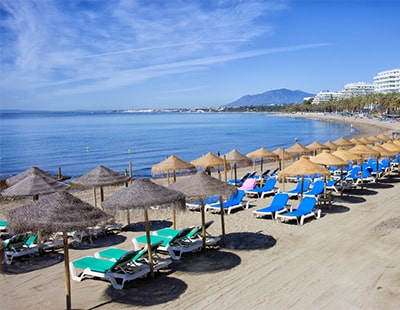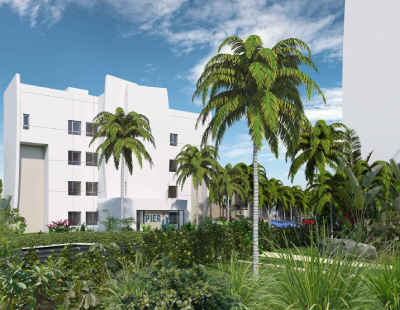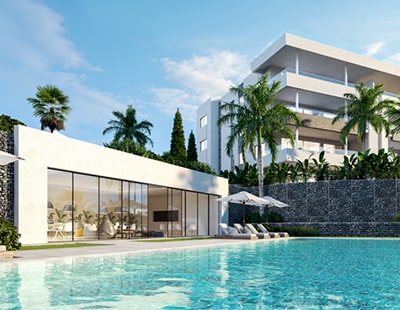However, Macià points out that the macro and microeconomic situation - recession, increased unemployment, lack of liquidity, etc - could translate into moderate price adjustments in major cities such as Madrid, Barcelona and Valencia of up to 10%.
“Market variations are linked to the effects of the pandemic on GDP and employment, which remain uncertain,” he explained.
The agency said that all the autonomous communities, without exception, have been affected by the state of emergency which kept Spain in lockdown for three months. It was only a few weeks ago, in late June, when Spain ended its state of emergency, with people finally able to freely move around the whole country to see relatives and friends for the first time since March 14.
Lockdown measures had been slowly rolled back gradually and to different extents in different regions as the country steadily got on top of its battle with Covid-19.
The extraordinary situation led to an unprecedented collapse in real estate activity. As well as a contraction in domestic demand, the short-term freeze of the international market has also had an impact depending on the destination’s reliance on transport, tourism, hospitality or leisure.
The effects of the pandemic, from a real estate sector point of view, have taken their toll differently depending on the area, although the impact will not be comparable to other previous crises.
The 2007-9 global financial crisis, for example, led to a property crash in Spain and many British buyers losing their deposits on new-build homes that were never built, which some investors have been able to reclaim in recent years.
Technology has also been crucial in softening the worries and concerns of overseas clients who haven’t been able to visit their homes, or a future planned home, during the crisis.
“The business has been modernised with greater use of digital support such as virtual tours, tele-video meetings and digital signature tools, allowing parts of the operation to be carried out remotely and for the client to have more information before making a visit,” Juan-Galo Macià continued.
“Regardless of this technology, we believe that physical viewings and human contact will continue to be essential, with the final decision normally being face-to-face.”
The company said that the common denominator of demand in practically all of the Spanish territories has been a desire for improved space, with a shift towards more spacious, bright properties with outdoor areas, such as a garden and a private pool.
Moderate price adjustment in Spain’s major cities
Spain’s biggest cities, where most of the population is concentrated, are always the first to suffer the impact of a crisis. In this case, the real estate sectors in Madrid, Barcelona and Valencia have been reporting price decreases of up to 10% in recent months.
Engel & Völkers insists it hasn’t actually seen this materialise as of yet, as its sellers and buyers have been keen to proceed without changes.
In the capital, though, the most pronounced falls have been registered in the city centre, where the current m2 price range is between approximately 2,400 and 10,000 euros/m2, in an area that before the pandemic was regarded as one of the most expensive in Spain.
By contrast, the exact opposite has occurred in Valencia, where the average prices around the city centre remain unchanged within a range between 1,620 and 3,758 euros/m2, while the areas towards the beach and surrounding areas have registered adjustments. Now, average prices there do not exceed 2,500 euros/m2, with a few exceptions.
There has also been an adjustment to the current market from Barcelona’s eleven districts, experiencing only marginal decreases of approximately 5% in Gràcia, Nou Barris and Sant Andreu, up to 8% in Eixample. In peripheral areas such as Vallès Oriental, though, there has been hardly any fluctuation in the market.
In Barcelona, where there is a higher percentage of foreign clients, restrictions on access caused issues during the lockdown. As a result, there was a short-term decline in international demand that in recent weeks has started to come back.
Increased demand for space and short-term rentals
The type of property most sought by clients during and post-confinement in large cities follows the same pattern, Engel & Völkers claims.
In Madrid, for instance, the demand for brighter, more spacious homes with outdoor spaces has grown by 50%. In Barcelona, however, demand has always been focused on penthouses and apartments with terraces.
Another big change that the pandemic has caused, according to the agency, has been the increase in short-term rentals around large cities or in coastal areas. In Valenica, for example, there is now increased demand for villas with pools for the summer season, with the clear intention of being able to work from home in an improved environment.
In Sitges, meanwhile, an increase in rentals by families from Barcelona is expected in the coming months. This also applies to second home clients looking within a province, or on the outskirts of large cities, the agency adds.
The islands - a real estate oasis
Prices in the Spanish islands are being maintained by high demand from overseas investors. In Mallorca, Engel & Völkers reports that the average sales price has increased by 12.5% since last year, up from €1.6 million in 2019 to €1.8 million now.
International clients are attracted by large isolated estates with spacious gardens, private pools and views of the Sierra de la Tramuntana.
In Menorca, demand for properties varies according to nationality. Spanish clients are interested in simpler properties, while the French, who dominate the premium sector, are looking for houses on the seafront and rural farms.
The British and Germans, on the other hand, are looking for a wide range of homes on the beach from €400,000 to large farms worth €3.5 million and upwards.
Ibiza, meanwhile, attracts those who are after modern architecture with sea views. The areas in demand include Ibiza Town and its surroundings, the southwest and the rustic interior of Santa Gertrudis. Prices remain high and stable, with average prices for villas and farms in the best locations sitting at around €3 million.
In the Canary Islands, clients are looking for houses or apartments with a garden or terrace in Santa Cruz de Tenerife. Here, local clients make up 85% of the market, whereas in Costa Adeje the main buying market is from overseas, with high demand for independent villas with private pools.
In Gran Canaria, the demand for houses in the countryside has increased, although there has been a growth in demand for small apartments for rent or investment.
The most requested properties are either in the city with outside terraces and a garage for less than €300,000, houses in the countryside with land for less than €500,000 and single-family homes with gardens on the outskirts.
High demand and stable prices on the Costa del Sol
One of the regions with a high concentration of demand, and where prices remain stable, is the Costa del Sol, an ever-popular tourist and second home hotspot. In the east and west of Marbella, the average cost remains at 3,900 euros/m2. In developments such as Nueva Andalucía prices are around 4,200 euros/m2, rising to approximately 5,800 euros/m2 on the Golden Mile.
Engel & Völkers' clients in these areas have traditionally been foreigners with high purchasing power. Post-pandemic, though, clients have shifted from a 75% international and 25% national split to approximately 50/50.
Larger residences with private outdoor spaces have been the most desirable properties, while there has also been an increase in the demand for holiday rentals. International clients in this area would like to remain in Marbella in the case of another lockdown. Here, one sale of over €2 million was concluded in full lockdown, where both buyer and seller were from overseas.
In Malaga, there is increased demand from both national and international clients . Prices have hardly changed, although slight decreases have been detected in the most exclusive areas of the city such as the historic centre and the east.
The percentage of foreign buyers remains at 65%, compared to 35% who are national buyers. In Mijas, there has been a change in the distribution of buyers from 60% foreigners and 40% of nationals to 30% -70%, respectively. However, prices have remained unchanged.
What about the other Costas?
Prices remain mainly unchanged along the Mediterranean coast, with stability in both Costa Blanca and Costa Brava.
According to Engel & Völkers Alicante, the short-term market paralysis has resulted in a large number of purchase offers with reductions of up to 20%. However, the forecast is for prices to adjust by a maximum of 5% by the end of the year.
Buyers on the Costa Blanca continue to look for homes with sea views and terraces, whether in central Alicante, the beaches or El Campello.
Most of the demand is for second-hand housing or new construction near completion. There is, though, little appetite currently for new off-plan developments at the start of their construction phase.
In this part of the country, the market is dominated by overseas buyers, with approximately 60% in Alicante and Denia. There was also increased demand from foreign clients in Altea and Calpe during the state of emergency, where one sale was made as a result of a video viewing.
“This is a clear example of the change that this health crisis has brought to the real estate sector: buying a home without seeing it in person - something that was unthinkable up until now,“ Engels & Völkers said.
On the Costa Brava, the market is heavily focused on second home residences, and there has been no price variations witnessed.
Aside from its foreign clientele, Engel & Völkers has witnessed an increase in demand for premium property in this region by national clients, whilst properties below €250,000 have suffered a decline in demand.









.png)










Join the conversation
Jump to latest comment and add your reply
Its great to see such positivity however we are noticing a large number of price reductions on properties across Spain, especially the more expensive ones. I agree the properties sub €300,000 remain the most stable. Buyers are returning but are expecting to see a "deal" as a result of the global crisis.
Please login to comment